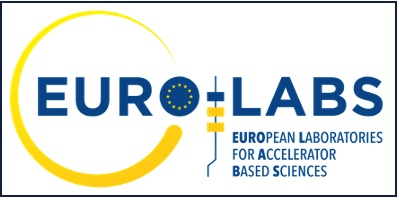Description
β detected NMR is a method that allows investigations of short-lived isotopes with a precision inaccessible to conventional NMR. This increased sensitivity is gained by combining hyperpolarisation of the nuclear spin generated through optical pumping with an efficient detection of the asymmetrically emitted β-particles from the decaying isotopes. One of the isotopes scheduled to be investigated with β detected NMR at VITO is $^{11}$Be. It is of interest because it is a single neutron halo nucleus. Measuring the magnetic moment of $^{11}$Be with greater accuracy will help to give insights into the nuclear magnetisation distribution of $^{11}$Be and thus directly confirm its halo structure.
To enable such measurements, the VITO beamline has undergone multiple major upgrades and extensions in the past, such as, the installation of a superconducting solenoidal magnet with sub-ppm homogeneity and the ability to measure in liquid samples [1]. The beta detectors are a critical aspect; their purpose is to detect the asymmetrically emitted β-particles from the hyperpolarized decaying isotopes. A new detector setup is currently being developed it will consist of two plastic scintillators light guides and silicon photomultipliers. It will be able to measure the energies of the detected β-particles. This is useful because in $^{11}$Be the two most intense transitions, the transition to the ground state and the first excited state have opposite beta asymmetry parameters and cancel each other out [2]. Including only the higher energy decay to the ground state will result in an increased observed β-decay asymmetry and thus enable the measurement of $^{11}$Be.
[1] Gins, W. & Harding, Robert & Baranowski, Mikołaj & Bissell, M.L. & Garcia Ruiz, Ronald & Kowalska, Magda & Neyens, G. & Pallada, S. & Severijns, Nathal & Velten, Ph & Wienholtz, Frank & Xu, Zhengyu & Yang, Xiaofei & Zákoucký, D.. (2019). A new beamline for laser spin-polarization at ISOLDE. Nuclear Instruments and Methods in Physics Research Section A: Accelerators, Spectrometers, Detectors and Associated Equipment. 925. 10.1016/j.nima.2019.01.082.
[2] Levy, C. D. & Pearson, M. & Morris, Gerald & Chow, Kai Hang & Hossain, M. & Kiefl, Robert & Labbé, R. & Lassen, Jens & MacFarlane, W. & Parolin, T. & Saadaoui, Hassan & Smadella, M. & Song, Q. & Wang, Shuangshuang. (2010). Development of the collinear laser beam line at TRIUMF. Hyperfine Interactions. 196. 287-294. 10.1007/s10751-009-0148-9
| Work-package | WP2 - RIs for Nuclear Physics |
|---|---|
| Facility identifier | ISOLDE |
